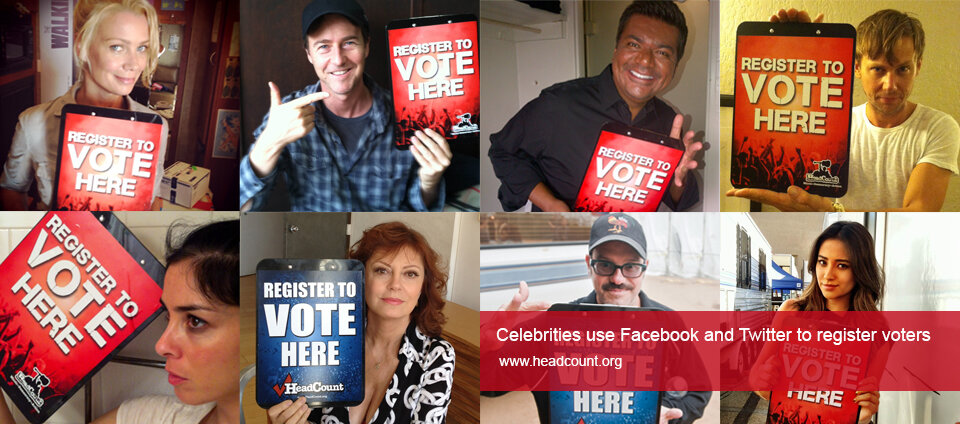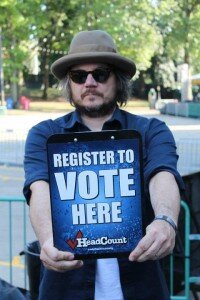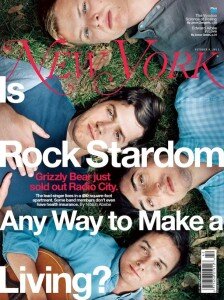HeadCount’s Andy Bernstein talks about simple ways to engage celebrities, his work with Obamacare, and what makes HeadCount unique.
Posted on February 20, 2014 by Cause Effect Agency
Cause Effect Agency recently spoke with HeadCount’s founder and president Andy Bernstein about his current project with the government to promote the Affordable Care Act (Obamacare), the right and wrong ways to engage celebrities, and his organization’s strategy for reaching young people.
HeadCount is a nonpartisan organization that works with musicians and celebrities to promote participation in democracy. In 2012, CEA secured celebrity commitments for HeadCount’s successful National Voter Registration Day campaign.
CEA: What would you say differentiates Headcount from other organizations that do voter registration?
The thing that is unique to HeadCount is our model for voter registration at concerts. We are really the only ones doing that on a national scale. We have affiliations with about 100 major touring bands, and then we have volunteer street teams in most major cities in the U.S. Whenever one of those bands visits a city where we have a street team we set up a table and register voters.
There’s actually a lot of other things HeadCount does that I think are equally unique, but maybe not as easy to describe. We put a big emphasis on social media and try to take a hard look at, “What is it that really engages young people? What is it that truly engages voters? How do we leverage our affiliations with these celebrities and musicians in a way that is really authentic and really strategic in terms of how to get the most out of social media and have the largest reach? How do we do it in a way so there is a real sense of community?”
CEA: A lot of people think that celebrity can be a silver bullet, and it sounds like you don’t take that for granted at all. What are the strengths that these artists bring to your organization and what are the strategies you use to work well with them?
You are so right, a lot of people think that working with artists or celebrities is a silver bullet, and a lot of people also think it is a lot easier than it is. One of the first things to know when working with celebrities is that they are getting asked to do a lot of things and their time is incredibly valuable. They’re also very protective of their image and care a lot about who else is doing things. You have to go in understanding that, because if you don’t understand that you’re just not going to get anywhere. We try to be very artist-friendly and try to put ourselves in the minds of the artists or the artist’s manager so that we aren’t asking them to do things that really aren’t right for them. So that’s the first step, and then strategically what we’ve done that has worked is make a lot of small asks for many artists, as opposed to trying to lean heavily on 2 or 3.
A really good example of that is something that we did with your company, our clipboard campaign a couple years ago. We had nearly 200 celebrities and musicians take photos holding up HeadCount branded clipboards which said “Register to Vote” on them. Then all on the same day, National Voter Registration Day, they posted and tweeted those photos with a link to our online voter registration form. We knew that asking for a photo was really quick and easy and registering to vote is very non-controversial, so this was an easy yes. Then the other piece to that strategy is that each of these artists have really incredible social media reach, getting into the millions. So it’s very simple, all the artist has to do is take a photo, and usually they have their handlers put it on their social media. So after the photo is taken the artist is pretty much done, but it’s spreading through their Facebook page and it’s going on Twitter. We generated well over 50 million impressions and registered 35,000 people in the same day through social media. It was about as many people as we registered online for the entire year up to that point. It was great branding for the organization as well. So when we look at what worked and what are the building blocks for the future, the idea of small asks to many people is something that we try to bake into everything else that we do.
Also being very visual, trying to tell a story in pictures rather than words, is effective. These are the things that work, the capital of modern society is likes and shares and retweets. When you create something that is visual, emotional, and simple, it will get shared, it will get retweeted. So we really try to learn from what has worked for us and build into every campaign these fundamental building block ideas of things that are easy to share, and things that are easy for a celebrity to do and therefore can be done with many, many different celebrities.
CEA: Are there experiences you’ve had that might be instructive for others about what doesn’t work?
Well, one thing that I’ve learned is that in society today, and probably this is universal, people don’t really like being told what to do. I think there is a tendency when working with celebrities to say, “Please tell people what to do. Tell people to recycle. Tell people to not eat meat.” The thinking is that if these words come out of a celebrity’s mouth, people will listen and take the action that you want them to take.
I don’t think celebrities like the “do this” approach. I know musicians don’t like it at all, it feels very dividing. It has to be more of a simple, emotional, visual approach and something that connects on a personal level as opposed to people feeling like someone is telling them what to do. Celebrities have incredible reach and incredible influence, but I don’t think any human can just say “do something” and everyone is gonna run out and do it. I think that’s a really important thing for anyone who is trying to work with celebrities in a philanthropic space to understand, that it takes a little more creativity and a little more authenticity to drive action than just having a celebrity say, “Go do something.”
CEA: Tell me about your work with the Affordable Healthcare Act (Obamacare) and how you ended up in that space. What was it about HeadCount that attracted the government to you and can you describe the work they want you to do?
The genesis of it was knowing that musicians are in an occupation that really stands to be affected by the Affordable Care Act more than most because the majority of musicians are independent contractors. Very few musicians are part of the union or have an employer where there are benefits involved. Many bands have figured out how to set up their own companies in order to get health insurance, but there are many that haven’t, including some pretty famous bands. You may be listening to a song on the radio, especially on alternative radio, and you think, “Oh that guy is a big rock star,” and that might be true, but he also may not have health insurance.
There was a cover story in New York Magazine awhile ago about Grizzly Bear, who had a top ten album, and the angle of the story was musicians aren’t getting rich anymore, and here is one of the examples, these guys don’t have health insurance. So we started there and said, “Well, you know, if we’re able to help musicians sort out their new options under the Affordable Care Act and then tell those stories to the public, that would be a great way to educate the public and help demystify it.” We had this idea back in the spring, and it was a time where nobody really understood what the Affordable Care Act or the health insurance marketplace really meant to them. So we pitched this idea kind of broadly and ended up getting a meeting with the U.S. Department of Health Institute and Services and they loved the idea. They connected us with their PR firm Weber Shandwick and we’ve been working with them ever since.
One of the things that we did is a video with a band called Brown Bird and a guy named Dave who has leukemia. Dave was diagnosed with leukemia last May while on tour, he didn’t have health insurance and had to cancel his tour and crowdsource his medical bills. It was a really uplifting story and they generated over $75,000 just from their fans. It’s a mid-sized touring act, not a platinum selling band by any means, so it’s a story of a community getting behind an artist they love. So we produced a very short video of Dave telling his story.
We also organized a Twitter campaign on Oct 1st when the health insurance marketplace opened up. Pearl Jam, My Morning Jacket and a lot of the acts that we work with, including some that Cause Effect Agency connected us to, sent tweets out. That was before all of the complications happened with the healthcare website, so I think the message has changed now, because before it was making people aware of the website, and now people are very aware of the website.
View the video HeadCount produced for the Affordable Care Act below:


